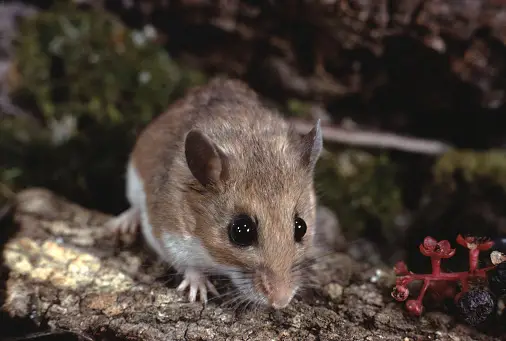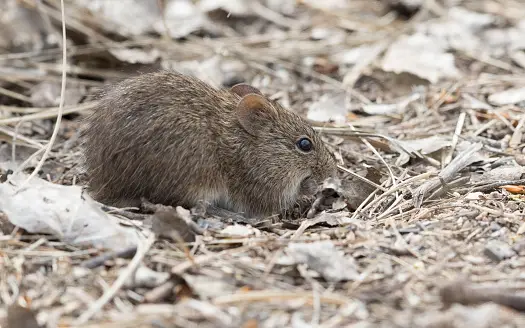The Types of Rodents That Carry The Hantavirus
- Esther M.
- Oct-28-2023
- Pest Control
In our previous post, we discussed Hantavirus – a virus that is spread by wild rodents like mice or rats. It causes the Hantavirus infection that can prove fatal to human beings. Someone comes into contact with the virus through the feces, urine, or saliva of infected rodents.
In this post, we’ll look at three rodents that carry different types of hantaviruses.
Deer Mouse
They are the host of the Sin Nombre Hantavirus. They have soft fur that may range from gray, to brown to reddish brown or even blackish, depending on the species. They have big eyes and ears, but the tail may be shorter than their bodies or way longer.

Deer mouse, (genus Peromyscus), any of 53 species of small rodents found in a variety of habitats from Alaska and northern Canada southward to western Panama. They have bulging eyes and large ears, weigh from 15 to 110 grams (0.5 to 3.9 ounces), and are 8 to 17 cm (3.1 to 6.7 inches) long. The tail may be shorter than the head and body or strikingly longer, depending on the species.
All deer mice have soft fur, but colour varies both between and within species. The fur is nearly white in some populations of cotton mice (Peromyscus gossypinus) in the southeastern United States, but it can range from gray through bright buff, brown, reddish brown, and to blackish in P. melanurus, which inhabits the mountain forests of southern Mexico. Read more from Britannica…
The deer mice are mostly nocturnal but you may find them active in the early evenings as well.
White Footed Mouse
They carry the New York Hantavirus. The fur on their backs ranges from light brown to more reddish brown, while the fur on the stomach and feet is white, hence the name. They range from 150-205 mm in length with the tail being a third the length.

White-footed mice range from 150 to 205 mm in total length and tail length from 65 to 95 mm. They weigh 15 to 25 g. The upperparts of the body are pale to rich reddish brown and the belly and feet are white. In some parts of the range it is difficult to distinguish P. leucopus from other, closely related species, such as P. maniculatus, P. eremicus, P. polionotus, and P. gossypinus.
White-footed mice are larger than P. eremicus, and the soles of their hind feet are furred in the heel region of white-footed mice but not in P. eremicus. P. maniculatus has a generally longer tail than white-footed mice that is distinctly bicolored. In white-footed mice, the tail is indistinctly bicolored. P. gossypinus can usually be distinguished by their longer hind foot, greater than 22 mm, whereas hind feet in P. leucopus are generally less than 22mm. P. polionotus is generally smaller than white-footed mice.
Other North American species of Peromyscus can generally be distinguished from P. leucopus by tail length. Read more from Animal Diversity Web…
White-footed mice are very adaptable and can survive in a wide range of habitats but mostly prefer warm dry forests and brushlands.
Cotton Rat
They carry the Black Creek Hantavirus. They are stout-bodied with small ears, with coarse fur ranging from grayish brown to dark brown. They eat mostly plant materials, making them notorious agricultural pests.

The average adult weight of a cotton rat is between 100 and 250 gm. The name Sigmodon comes from the sigmoid enamel loops on the grinding surface of the molar. Sexual dimorphism is not prominent, but males and females can be distinguished based on the size of the genital papilla and distance from the anus.
The cotton rat is distinguished from the Norway rat by its smaller size, shorter tail, and longer grizzled fur. The lifespan of the hispid cotton rat is less than 6 months in the wild but in captivity animals have a survival span up to 23 months of age.
The cotton rat (Sigmodon) species has been recognized as a significant animal model for diseases caused by a variety of human and rodent pathogens. The primary research use for cotton rats is for studies into infectious disease and immunology. Read more from National Library of Medicine…
Cotton rats are active through the day and night. They mostly inhabit cultivated fields with tall crops. These rodents are not only a danger to crops or fields but may carry the hantavirus spreading infections to people.
Rodent control is crucial in Virginia homes to prevent damage to property and potential health risks. By implementing effective measures, homeowners can protect their homes from structural damage caused by rodents and avoid contamination from their droppings and urine.
Do not hesitate to contact us at Backyard Bug Patrol for effective rodent control services.
